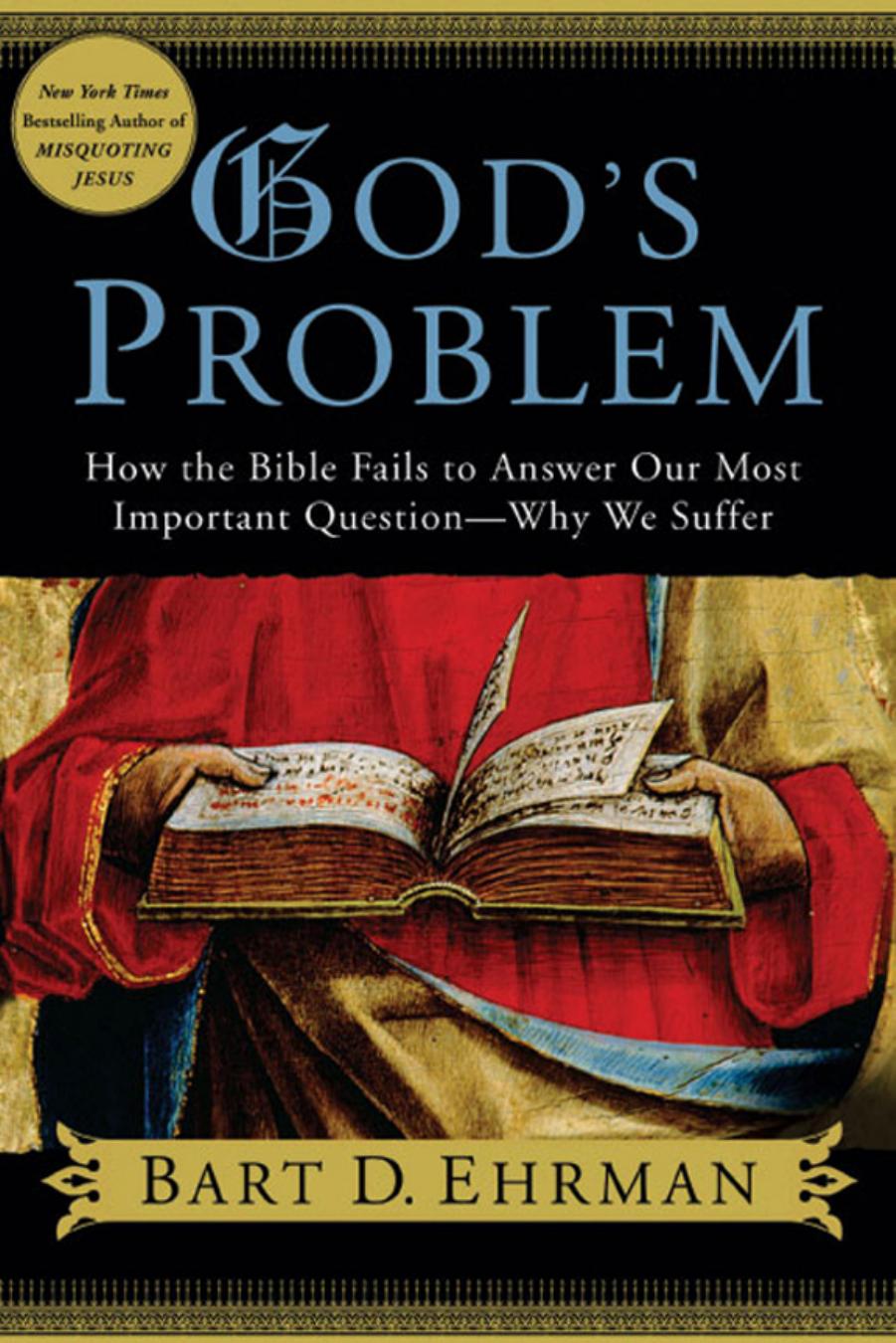God's Problem: How the Bible Fails to Answer Our Most Important Question--Why We Suffer by Bart D. Ehrman

Author:Bart D. Ehrman [Ehrman, Bart D.]
Language: eng
Format: epub, pdf
Tags: General, History, Religion, Philosophy, Death; Grief; Bereavement, Christian Theology, Spirituality, Christian Life, Biblical Criticism & Interpretation, Biblical Teaching, Faith, Suffering
ISBN: 9780061173929
Google: uOCx_wcDkbYC
Amazon: B003BVK56E
Publisher: HarperOne
Published: 2008-01-02T10:00:00+00:00
s i x
Does Suffering Make Sense?
The Books of Job and Ecclesiastes
Everyone has experienced physical suffering and will experience still more before they die. From broken fingernails to broken bones, from hardened arteries to cancer to failed organs; diseases curable and incurable. My dad was taken by cancer eighteen years ago at the ripe young age of sixty-five. In August of that year we were together on a fishing trip, and he seemed fine. Six weeks later he was on his deathbed in the hospital, his physical appearance changed almost beyond belief, with cancer metastasized throughout his body. Six weeks later, after excruciating pain—one doctor didn’t want to increase his morphine because he might get “addicted” (you wonder sometimes what people are thinking)—six weeks later, he was dead.
Just now, many years later, I was sketching this chapter in an air-port in Pennsylvania, coming home from a memorial lecture I had given at Penn State University for a friend and colleague, Bill Petersen, a brilliant linguist and historian of early Christianity who had died of cancer at the peak of his career, aged fifty-nine. It can hit any of us anytime. Even the more prosaic sicknesses that drive us to our beds and make us think the world is surely going to end soon—flu, for example, so bad that it makes you want to die, or to think that you will.
Actually, many people do die of the flu. The worst epidemic in American history was the 1918 influenza epidemic, overshadowed 160
G O D ’ S P R O B L E M
in history by the First World War but far more deadly for American soldiers, not to mention civilians. In fact, it killed more Americans than all the wars of the twentieth century put together. It broke out in an army camp at Fort Riley, Kansas, in March 1918; doctors thought that it was a new strain of pneumonia. And then it seemed to disappear. But it came back with a vengeance, both among civilians and among the troops—who managed to take it over to Europe when transferred to the front lines, so that soldiers from other countries contracted it and took it back to their homelands. It ended up being a worldwide epidemic of apocalyptic proportions.
The symptoms were unlike anything anyone had ever seen. It seemed to attack the young and healthy—twenty-one- to twenty-nine-year-olds were most at risk—rather than the very young, the very old, or the very weak. Symptoms would appear without warning and worsen by the hour. The lungs would fill with fluid, making breathing difficult; body temperatures would soar so high the hair would begin to fall out; people would turn blue and black; they would eventually die by drowning in the fluid gathered in their lungs. All this might occur within twelve hours. Someone you saw healthy at breakfast could well be dead by dinner. And the numbers of those infected were extraordinary.
In September 1918 twelve thousand died in the United States—
and then it got worse. There
Download
God's Problem: How the Bible Fails to Answer Our Most Important Question--Why We Suffer by Bart D. Ehrman.pdf
This site does not store any files on its server. We only index and link to content provided by other sites. Please contact the content providers to delete copyright contents if any and email us, we'll remove relevant links or contents immediately.
More Language of Letting Go: 366 New Daily Meditations by Melody Beattie(2953)
The Secret Power of Speaking God's Word by Joyce Meyer(2895)
The Holy Spirit by Billy Graham(2858)
To Light a Sacred Flame by Silver RavenWolf(2750)
Tuesdays With Morrie by Mitch Albom(2649)
The Lost Art of Good Conversation by Sakyong Mipham(2522)
The Traveler's Gift by Andy Andrews(2357)
Kundalini by Gopi Krishna(2125)
A Kingsbury Collection by Karen Kingsbury(2041)
Finding Chika by Mitch Albom(1915)
Angels of God: The Bible, the Church and the Heavenly Hosts by Mike Aquilina(1909)
Angels by Billy Graham(1870)
As a Man Thinketh by James Allen(1849)
Curse Tablets and Binding Spells from the Ancient World by Gager John G.;(1826)
Anxious for Nothing by Max Lucado(1804)
The Yoga of Jesus: Understanding the Hidden Teachings of the Gospels by Paramahansa Yogananda(1791)
Autobiography of a Yogi (Complete Edition) by Yogananda Paramahansa(1763)
Barking to the Choir by Gregory Boyle(1759)
How To Be Born Again by Billy Graham(1716)
